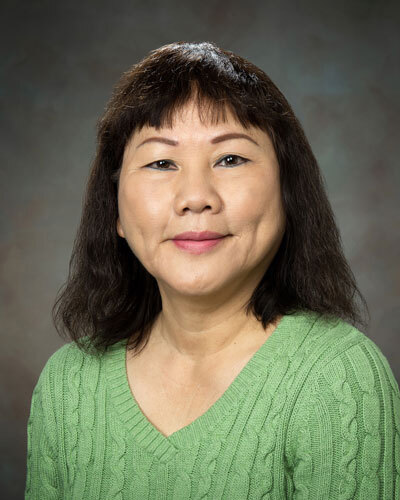
Could you talk a little about your background? How did you become interested in science?
I grew up in Vietnam and I was very good in math and physics. I got a B.S. degree in physics and chemistry at Hue University of Education in 1977. I came to the United States in 1978. With my strong math background, I attended California State University, Sacramento where I received B.S. and M.S. degrees in electrical and electronic engineering in 1986 and 1993.
How did you come to work at NASA?
After college, I worked for General Dynamics and then for the U.S. Air Force at McClellan Air Force Base (AFB) developing flight software for F-111 aircrafts. I later moved to Lancaster, California, to work for the U.S. Air Force at Edwards AFB Benefield Anechoic Facility. There, I kept checking for opportunities to work at NASA. When openings were posted, I applied and was hired in 1997 to work in the Aerostructures Branch's Flight Loads Laboratory (FLL).
It sounds like working for NASA is something you really aspired to.
Back when I was a teenager in Vietnam, I recall that before the movies theaters often showed short clips of astronaut Neil Armstrong walking on the moon. Even in a small undeveloped country like Vietnam in the 1960s, NASA was well known and I remember admiring its work so much. I never dared even to dream that some day I could work for NASA and especially for Armstrong Flight Research Center. Sometimes I have to pinch myself—am I really working for NASA? Now, I've been at NASA for more than 21 years.
What research accomplishment have you achieved recently?
I completed a computer program named the Structure Deformation Calculation Program, which will be useful for structural shape monitoring. The program uses strain and geometry data of a structure to calculate deflections, slopes, cross-sectional twist angles, and depth factors if applicable. It also calculates the maximum and minimum deflections of each strain-sensing station.
What are some potential applications for the program?
The program works with data collected from fiber optic strain sensors as well as conventional strain gauges and will be helpful for determining weak spots on aircraft, ships, bridges, and many other structures. It took me five years to finish the program and a NASA Technical Memorandum™ Structure Deformation Calculation Program Based on Displacement Theory for Shape Predictions, since my first priority is to support projects. The TM has instructions for every structure type to help users, who will need to prepare strain data and geometry files to use the program.
Can you describe your experiences with the Technology Transfer Office (TTO)?
The TTO really does a great job in going to each branch, meeting inventors, and talking about the technology transfer process. So, when someone comes up with new idea that might be useful, we know how to file a New Technology Report (NTR). Then, the TTO can promote the technology.
And that has happened for one of your programs, yes?
Because of the TTO, my Half-Cycle Crack Growth program is available online through the NASA Software Catalog. And thanks to the efforts of the TTO, the Half-Cycle Crack Growth Program has been downloaded by nearly 40 researchers in the United States and worldwide. It feels good to know that my programs have been used by other researchers.
You've worked in engineering for more than 30 years. How have things changed for women in that time?
Being a minority female engineer is not easy. I have worked with people who have supported me and with people who have treated me as inferior. I have learned to be patient, enduring, and focus on my work. It was more difficult 30 years ago when there were not many female engineers in the workforce. In recent years, the number of female engineers has increased significantly, and the working atmosphere is more supportive and encouraging.
What are some of the more memorable projects you've been involved in at Armstrong?
Fortunately, I could apply the math I had learned in school to develop the Proportional and Integral Thermal Control System for the FLL that was used for important heating tests from 2003–2010. I have supported Dr. William L. Ko with the Displacement Theory and Displacement Transfer Functions. Together, we published more than 10 Technical Publications and Memoranda. I am still supporting the FLL with the Interactive Analysis and Display System whenever they need me.
What are you working on now in the Advanced Systems Development Branch?
I'm now working on the Flight Data Portal (AFDP) project, which will archive and time slice flight data…. The system will provide web-based access for users to search and access flight data. Then, users will be able to submit requests to time slice flight data for a small number of selected parameters, such as position, velocity, or wind speed in a selected time period for their research and analysis. Armstrong is leading the Phase I effort, so we're developing the code. The AFDP will be used by four Aeronautics Research Mission Directorate (ARMD) NASA centers involved in flight testing and possibly the Air Force and commercial airlines.
It sounds like an interesting project.
With this project, I am given another chance to deploy my math skills again and I feel so blissful. It's an ambitious project, and I like working in a job that has meaning. The system should be in use for 20–30 years—way after I retire— so I'm trying to put the best code I can in there. I'm very happy working at NASA because it allows me to use and apply what I learned in school and have it become useful for many people. That's my goal. If I can do it better, I always do.



